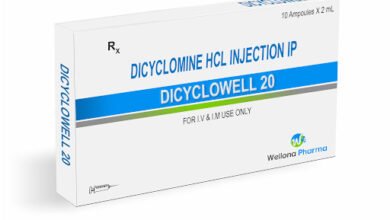After 14 Years of Chronic Pain, I’m Finally Embracing Pain Management

As told to Nicole Audrey Spector
It was a gorgeous summer afternoon in Los Angeles. I’d just had a great time out at brunch and was in my truck headed home when I heard my phone ringing in my purse on the passenger seat.
I slid over to grab it and just as I did that, I realized I was heading straight into a brick wall. I swerved to avoid hitting it — and my truck flipped over.
I was ejected from the vehicle and landed on my back.
I suffered significant spinal cord injuries that resulted in paraplegia, meaning I am unable to voluntarily move my legs. I spent the whole month after the accident in the hospital undergoing intense rehabilitation. The pain was overwhelming — and I say that as someone with a pretty high tolerance for pain — but even worse was the depression that set in like a graveyard fog.
In the hospital, the nurses would show me a little mood chart and ask me to rate my mood from 1 to 10.
I usually felt like a zero.
How could I live my life without the use of my legs? I was an avid runner. The day before the accident, I’d gone to the gym and run and run and run. It was as though somewhere deep within, I knew it would be my last time running.
Going home after the accident was a big achievement in my healing journey, but it only made my mood darken. I was coming back to the home of the person I’d been before: a 28-year-old single mother to an 8-year-old daughter, Brianna. The old Cynthia spent most of her mornings at the gym and most of her nights out with friends, dancing and laughing.
The new Cynthia was still a mother, thank goodness, but the dancing and laughing and the vivacious light inside of her . . . that was all gone. And it was the eve of Independence Day when I got home. That was salt in the wound because I was no longer able to be independent. I now needed a caregiver to help me with the most basic tasks, like bathing and shaving my legs.
September 2022, the Getty in L.A. (Photo/Maria Blankevoort)
Things I used to take for granted — like getting in and out of bed or getting on and off the toilet — were now significant feats. Have you ever tried to put on your jeans while balancing yourself on a toilet with no use of your legs? It’s exhausting. Every little thing is just exhausting.
But if you remain idle in your wheelchair for too long, you’re asking for even more problems, like pressure ulcers, muscle atrophy and osteoporosis.
Over the following months, my mother and grandmother swooped in to help Brianna and me get back to some sense of normalcy. I continued going to outpatient therapy to strengthen my back and upper body. I may have been a gym rat before the accident, but now I was working out muscles that had never been used before. It could be challenging.
But what was — and still is — really difficult are the nights.
People often think that if you can no longer use your legs, you can no longer feel them. This is not the case. I am paraplegic, yet I still have intense pain in my legs. It comes on suddenly, like bolts of lightning or the anxious feeling of spiders running up and down my veins.
I’m used to not really sleeping much.
I was on some pain medication for the first two years after my injury, but eventually I got fed up with the meds. I decided that if I was going to truly live my life in this still new-to-me body, I needed to feel things — even pain. Plus, I didn’t want to end up addicted to pain medication. I’d heard all the horror stories of needing more and more opiates — of never getting enough.
I lived without any pain treatment for years. And for a while it was okay. I found fitness and freedom in swimming, and I still swim as often as I can. But nothing would quiet the pain that was piping through me all day and night like a sparking electrical cord.
My moods were often low and my temper hot.
My breaking point came, surprisingly, a couple of years ago in the form of a toothache. I went to the dentist and had some work done and was given a low dose of opioid pain medication. It was the same sort of medication that I knew plenty of other para- and quadriplegic people use to manage their chronic pain, but I was done with all that, right? I was tougher than the meds.
I took the pain meds to manage the toothache and realized that it helped tremendously with the chronic pain I’d been struggling with from my spinal injuries. I think I’d been in denial about just how bad my chronic pain was. And I quickly discovered that I was actually able to do more physically with the pain medication than I had been able to do without it. I was also able to sleep better because the pain was less acute, less jolting. I’ve been taking the lowest dose possible for many months, and it’s still working, which quells my old fears that I’d have to keep going up and up on the pain meds. Admittedly the pain isn’t wiped out, but for the first time in a long time, I can say that it’s manageable.
I’m also keeping up with a tight fitness regimen and doing a rehab wellness program with an outpatient therapist. This helps soften the pain, too.
Only recently have I become comfortable admitting that pain medication and other pain management tactics, including exercise and outpatient therapy, are necessary forces of good in my life. Just as I only recently have become comfortable admitting that chronic pain wasn’t just hurting my body; it was also hurting my mind and my relationships.
It’s been 14 years since my life-changing car accident. It’s only been two years since I’ve learned that it’s okay to treat the pain in the way that works for me. Who knows where I’ll be in two years from now? But I’m aiming for a good 8 on that happiness scale.
Have a Real Woman, Real Stories of your own you want to share? Let us know.
Our Real Women, Real Stories are the authentic experiences of real-life women. The views, opinions and experiences shared in these stories are not endorsed by HealthyWomen and do not necessarily reflect the official policy or position of HealthyWomen.
From Your Site Articles
Related Articles Around the Web
Source link
#Years #Chronic #Pain #Finally #Embracing #Pain #Management



